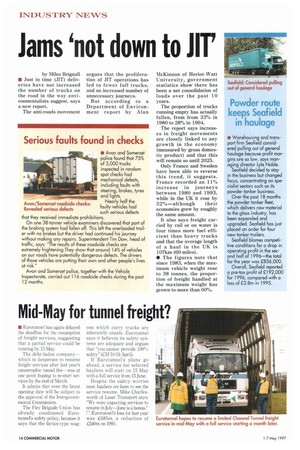Jams 'not down to JIT
Page 16

If you've noticed an error in this article please click here to report it so we can fix it.
by Miles Brignali • Just in time (JIT) deliveries have not increased the number of trucks on the road in the way environmentalists suggest, says a new report.
The anti-roads movement argues that the proliferation of JIT operations has led to fewer full trucks, and an increased number of unnecessary journeys.
But according to a Department of Environment report by Alan McKinnon of Heriot-Watt University, government statistics show there has been a net consolidation of loads over the past 10 years.
The proportion of trucks running empty has actually fallen, from from 33% in 1980 to 28% in 1994.
The report says increases in freight movements are closely linked to any growth in the economy (measured by gross domestic product) and that this will remain so until 2025.
Only France and Sweden have been able to reverse this trend, it suggests. France recorded an 11% increase in journeys between 1980 and 1993, while in the UK it rose by
32%—although their economies grew by roughly the same amount.
It also says freight carried by rail or on water is four times more fuel efficient than heavy trucks and that the average length of a haul in the UK is 107krn (69 miles).
• The figures note that since 1983, when the maximum vehicle weight rose to 38 tonnes, the proportion of freight handled at the maximum weight has grown to more than 60%.
























































































































